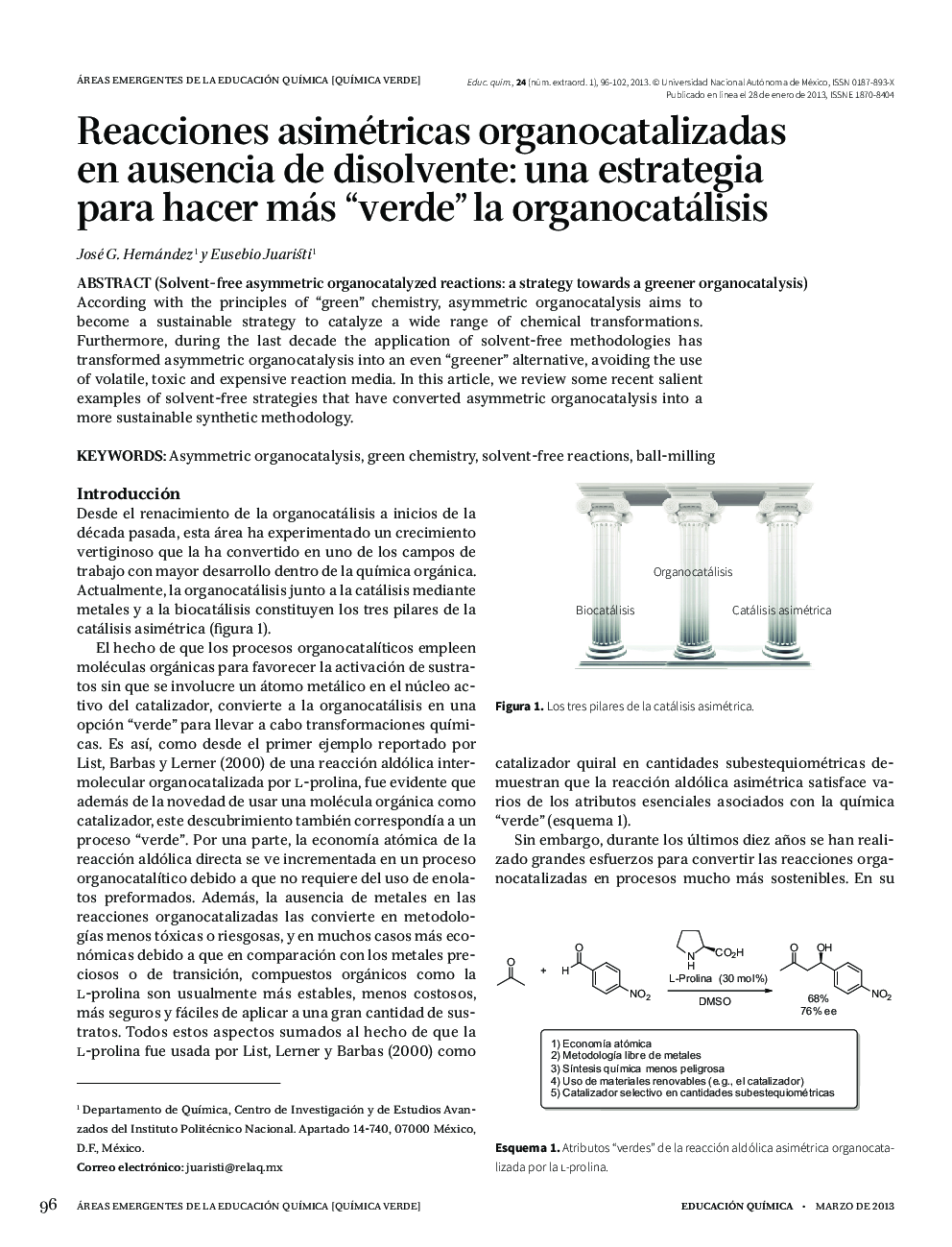| Article ID | Journal | Published Year | Pages | File Type |
|---|---|---|---|---|
| 1183898 | Educación Química | 2013 | 7 Pages |
Abstract
According with the principles of “green” chemistry, asymmetric organocatalysis aims to become a sustainable strategy to catalyze a wide range of chemical transformations. Furthermore, during the last decade the application of solvent-free methodologies has transformed asymmetric organocatalysis into an even “greener” alternative, avoiding the use of volatile, toxic and expensive reaction media. In this article, we review some recent salient examples of solvent-free strategies that have converted asymmetric organocatalysis into a more sustainable synthetic methodology.
Related Topics
Physical Sciences and Engineering
Chemistry
Analytical Chemistry
Authors
José G. Hernández, Eusebio Juaristi,
